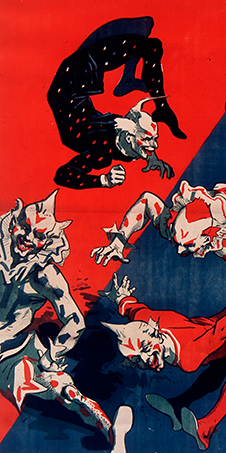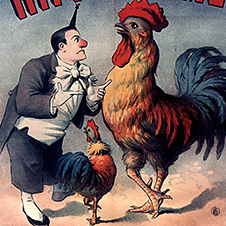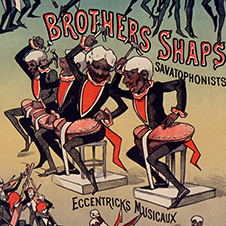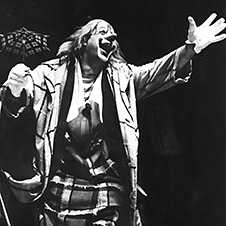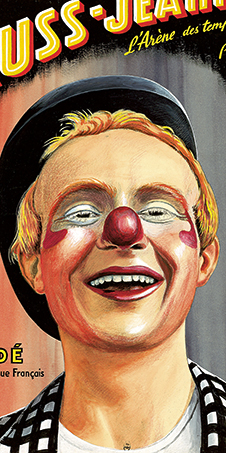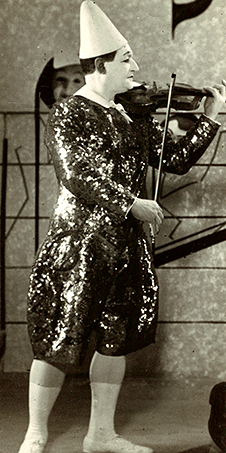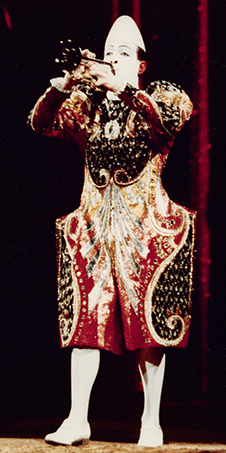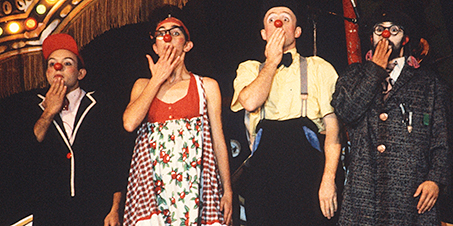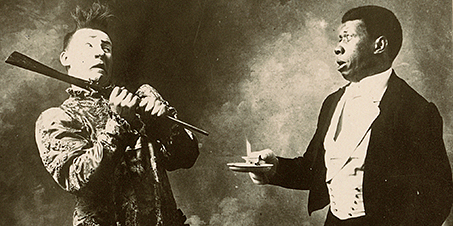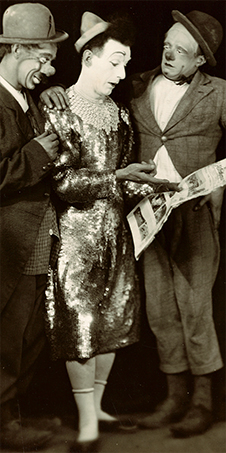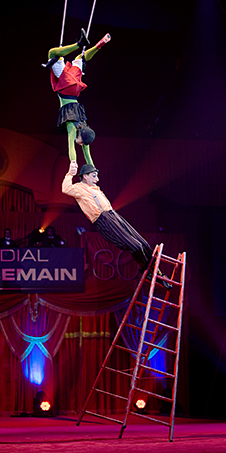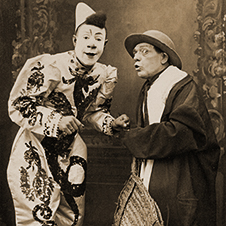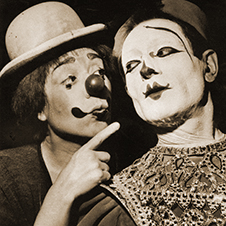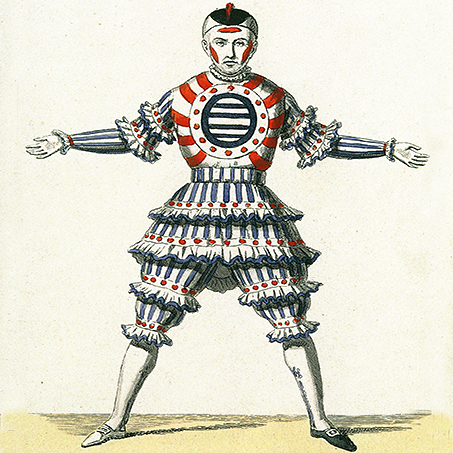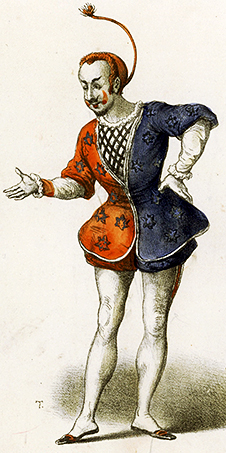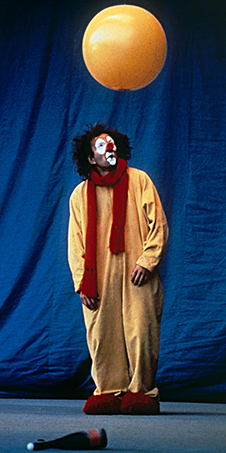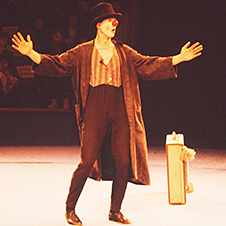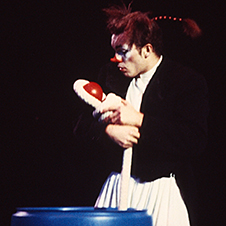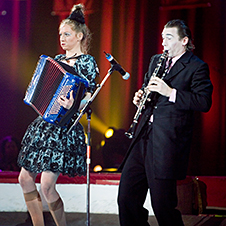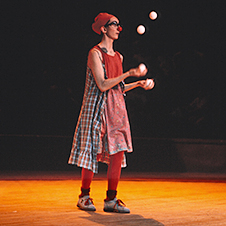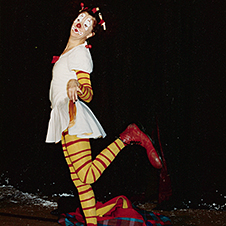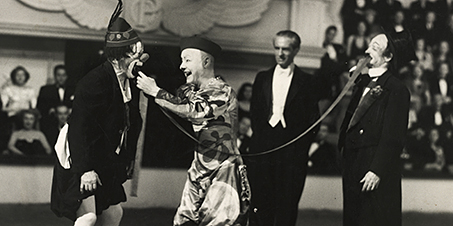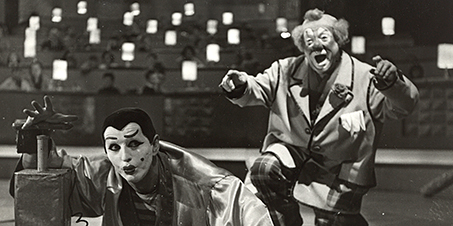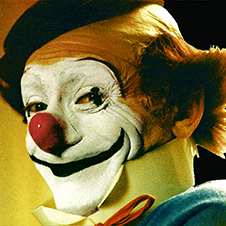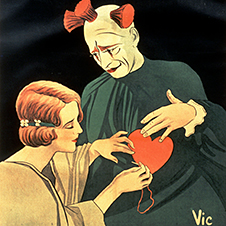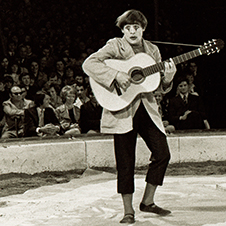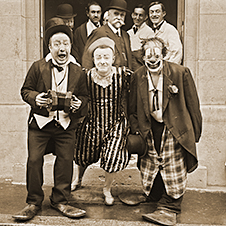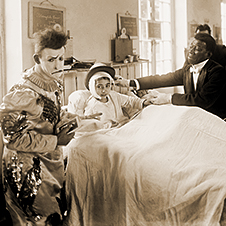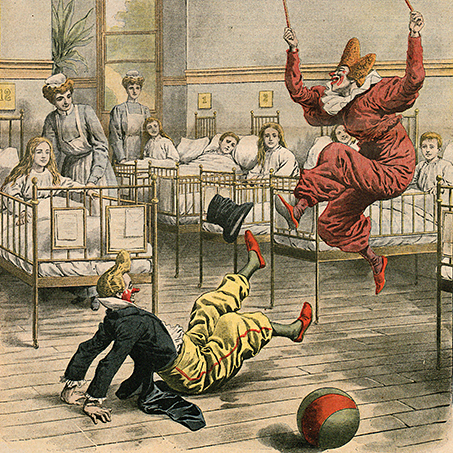A story of laughter
A fall, a tumble, a slip has always triggered hilarity since the dawn of Humanity. Codified, reproduced, affirmed, the mechanisms of laughter feed from one century to the next the imagination of histrions, buffoons, jokers and clowns. Sacred and profane representations identify the clown as a tutelary figure of a reversal of power, a silhouette torn between servitude and impertinence.
The Auguste
Born, in all probability, in 1874 in Berlin under the dome of Circus Renz, the Auguste was born out of anger and misunderstanding. The story suggests a fall, some jibes and an upcoming triumph: a squire pursued by the director of the circus stumbles on the circus bench, sprawls all the way down and is shouted at by the audience, who hilariously call him an idiot: " august " in Berlin slang…
The clown
By moving from the trestles to the ring at the end of the 16th century, the clown, jumper, musician squire or trainer, established himself as a symbol of the circus from the end of the 18th century onward. As a long-suffering mocked and pushed victim, he released this initial tension when he joined forces with the Auguste. Wearing white make-up and glittering costumes, he took power and became his partner's elegant stooge, who in turn became a victim…
Duos and trios
By associating with the Auguste, the clown gains a new status. Together, they created the clownish duo, symbolised by Foottit and Chocolat or Antonet and Beby. The complexity of the entrées led to the birth of the trio, initiated by the Fratellinis in 1910, where the white clown was a perfect partner for an Auguste and a very clumsy contre-pitre clown. Others, like the Nouveaux Nez, created quartets, or even troupes like the Licedei collective founded by Slava Polounine.
Clown comedy
The comic entrées, mimed or spoken, are small and very simple fables, designed to make people laugh with simplicity and naivety. Similar to Commedia dell'arte's outlines, based on a comic situation and slapstick or on a series of props, they rely on the invention and performance skills of the clown and those of one or several partners.
Appearences
The Elizabethan clown is dressed like a peasant. The first circus clowns borrow as much from the look of a buffoon as from the Shakespearean jester.
At the end of the 19th century, inspired by women's fashion, the clown's costume was embellished with sequins and embroideries and offered itself as a sparkling counterpoint to the oversized and exuberant clothes of the Auguste. Nowadays, there is no longer such a clear distinction and the appearance of each party can be easily adapted by borrowing from various sources.
The russain school
In 1930, one of the first graduates of the Moscow State School of Circus Arts, Mikhail Rumyantsev, became a clown under the stage name Karandash. The Russian school was founded with him, embodied between the 1950s and 1990s by Yuri Nikulin, Oleg Popov, Leonid Enguibarov or Anatoly Marchevsky and more recently by Group A, the KGB or the Licedei collective. Influenced by Charlie Chaplin and Marcel Marceau, in particular, these artists claim a simple appearance to bring the clown closer to the human being.
Contemporary clowns
From the 1970s onwards, the clown figure began to undergo a decisive transformation in order to create new characters. The rupture between the white clown and the Auguste is complete and the new clowns anchor their characters in a different perception of the world's convulsions. The contemporary clown breaks free from classical codes and draws his inspiration from the urgency of the political or social situations of his time. From Slava Polounine to the Nouveaux Nez, from Ludor Citrik to Bonaventure Gacon or Yan Frisch, the clown breaks conventions and is in step with his time.
Female clowns
The first female clowns in history seem to be Evetta Matthiews, Lulu Craston, Lonny Olchansky and Miss Loulou. As a duo or trio, associated with male partners, they nevertheless create new characters. In the early 1970s, Annie Fratellini paved the way for many artists who wanted to explore a unique territory by playing on their femininity.
On the screen
The clown figure is probably the most represented since the early days of cinema at the end of the 19th century. The character inspires the greatest filmmakers, from Lon Chaney to Ingmar Bergman or Soderström to Fellini. These incarnations contribute to further increasing the popularity of a silhouette and character bordering on theatre and circus.
On stage
Histrions, jokers, Italian actors: laughter and stage have already been associated for a long time when the Elizabethan clown frees himself from the theatrical universe to reach the world of the street and later the world of the circus.
From now on, as they return to their roots, many clowns, since Grimaldi, the Hanlon-Lees or Grock, have preferred to perform on stage, adjusting their intentions and movements to a different, rectangular and frontal playing area.
Clown and mediation
George Foottit in 1917 or Grock and Alfred Shatz in 1941, went to the Théâtre des Armées to entertain the soldiers at the rear. Averino and Chocolat or the Fratellini trio, among other clownish teams, have regularly gone to meet young patients in hospitals. The clown is a perfect mediator between man and his suffering. The success, today, of the Clown Care Unit, Rire Médecin ("Healing Smile"), Bataclown or Clowns sans Frontières ("Clowns without Borders"), bears witness to the challenges of this new territory, both social and artistic.



